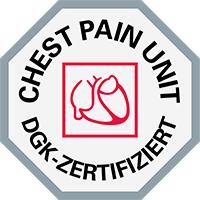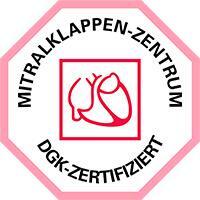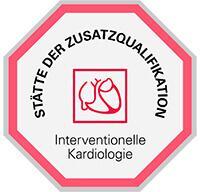Endocarditis implies the inflammation process of the endocardium. Endocarditis cannot be defined as an independent health condition, as this pathology is quite often a manifestation of another heart disease or its consequence. Such an inflammatory process in the heart can affect aortic and mitral valves, and the vessels that adjoin the heart.
Content
- What is endocarditis?
- Types of endocarditis
- Endocarditis risk groups
- Symptoms of endocarditis
- Treatment principles in hospitals in Germany
- How effective is antibacterial therapy?
- Surgical treatment of endocarditis in hospitals in Germany
- Who needs medical prophylaxis against endocarditis?
- Hospitals in Germany for endocarditis treatment
- The cost of treatment in Germany
What is endocarditis?
Endocarditis is one of the most insidious heart diseases, accompanied by the formation of vegetations on the mitral and aortic valves or subclavian structures, their destruction, dysfunction, and formation of valve failure. Under the influence of various infections (there are about 130 pathogens of this disease), the inner lining of the heart becomes inflamed. The danger is that the symptoms of infectious endocarditis do not appear immediately, so patients with the pathology do not always seek medical help in time. Also, the disease is not easy to diagnose, so treatment may be started later than it should be. That is why cardiologists recommend regular examinations at medical centers equipped with modern devices with extensive diagnostic capabilities.
There are acute and subacute forms of infectious endocarditis. Quite common in the past, the prolonged course of endocarditis is now a rarity. The aortic and mitral valve endocarditis is most often detected, while the tricuspid valve and pulmonary valve are less often involved.
The annual incidence of infectious endocarditis is 38 cases per 100 thousand people, and more often it affects young people. In recent years, there has been a widespread increase in the incidence of infectious endocarditis, which is associated with the widespread use of invasive instrumentation, more frequent surgical interventions on the heart, increasing drug addiction, and the number of patients with immunodeficiency conditions. The lethality in infectious endocarditis still remains at the level of 24-30%, reaching 45% in elderly and senile patients. These data emphasize the difficulty of timely diagnosis and treatment of this health condition.
Types of endocarditis
According to the causes and clinical manifestations, the disease is classified as follows:
- Infectious or bacterial endocarditis most often manifests itself in an acute form, involving ulcers and polyps forming on the heart valves or in the heart tissues, which leads to functional disorders.
- The chronic or subacute form is usually caused by streptococci. The disease is manifested by ulceration and a change in the shape of heart valves, the formation of blood clots in blood vessels with subsequent occlusion. Kidney inflammation, also affecting other organs may follow.
- The disease of non-infectious nature occurs due to a general weakening of the body, with various intoxications. It is most often manifested in the form of thrombotic deposits on the tissues of the valves.
- Rheumatic endocarditis, as the name itself suggests, occurs due to rheumatism. Rheumatic inflammation spreads to the heart valves and causes heart defects. There are 4 forms of it, such as diffuse, acute warty, recurrent warty, and fibroblastic.
- Loeffler endocarditis is characterized by an increase in eosinophils in the blood and a decrease in the volume of the heart chambers due to fibrotic changes in the endocardium and then in the myocardium. There are three stages: acute (cell death within 5-6 weeks), thrombotic (thrombus formation and atrophy of some tissues), and fibrosis (sclerosis and thickening of the endocardium).
Endocarditis risk groups
The following groups of people have a higher risk of getting the heart disease than the general population:
- Patients with heart valve disease. There are two kinds of problems here: valve stenosis, in which there are constrictions and disturbances in blood flow, and valve regurgitation, in which the valves do not close properly and blood flow moves in the wrong direction. Heart valve disease can be congenital or acquired, i.e., arising from rheumatism, myocardial infarction, or hypertension.
- People with prosthetic valves. The risk is relatively low. Only one patient with an artificial valve out of a hundred develops endocarditis.
- Patients suffering from hypertrophic cardiomyopathy. In this heart disease, the heart chambers have a smaller volume due to the thickening of the muscle walls. This leads to decreased blood flow and impaired muscle relaxation.
- Patients who have a central venous catheter.
- People who are immunocompromised, such as those with HIV or receiving chemotherapy.
Symptoms of endocarditis
Fever and intoxication are the earliest and most persistent symptoms of infective endocarditis and are seen in almost all patients. The nature of the increase in body temperature can be very different. In subacute endocarditis, the disease often begins asymptomatically, with fever, malaise, headaches, general weakness, fatigue, decreased appetite, and weight loss. Subfebrile fever is accompanied by coughing and sweating. During this period, cardiac complaints are usually absent, except for persistent sinus tachycardia, which is often incorrectly associated with a fever.
The fever itself and accompanying symptoms of intoxication are often considered a manifestation of tuberculosis intoxication, chronic tonsillitis, chronic bronchitis, viral infection, etc. After a few weeks (up to 4-8 weeks), a more or less typical clinical picture is formed in patients. An irregular fever of the remittent type (less hectic or persistent) sets in. The body temperature usually rises, which is accompanied by pronounced chills. Sometimes the fever sets in alternating with short periods of lowering to normal temperature numbers. Cardiac symptoms usually appear later, with the formation of aortic or mitral valve disease or/and the development of myocarditis. Due to increasing intoxication and elevated body temperature, the following symptoms may appear and gradually progress:
- Dyspnea at exercise or rest.
- Pain in the heart region of moderate intensity (often prolonged); in rarer cases, the pain becomes acute and resembles an attack of angina pectoris.
- Persistent sinus tachycardia, independent of the degree of increase in body temperature.
Later on, a developed clinical picture of left ventricular insufficiency may appear.
It should be remembered that infectious endocarditis, which is a multiorgan disease, may manifest with various symptoms due to lesions not only of the heart, but also of other organs and systems. In this regard, the following symptoms may come to the fore:
- Swelling under the eyes.
- Intense headaches, blood in the urine, headaches, pain in the lumbar region, urinary disorders (symptoms of glomerulonephritis or kidney infarction).
- Intense headaches, dizziness, nausea, vomiting, general brain, and focal neurological symptoms (cerebrovascular disease or cerebral thromboembolism with development of ischemic stroke).
- Sharp pain in the left subcostal area (spleen infarction).
- Skin rash similar to hemorrhagic vasculitis.
- Clinical manifestations of pulmonary infarction.
- Sudden loss of vision.
- Joint pain.
Treatment principles in hospitals in Germany
Treatment of patients with infectious endocarditis is carried out in the hospital setting with adherence to the following basic principles:
- Treatment should be aimed at a particular pathogen.
- Only antibacterial preparations possessing bactericidal activity should be used for treatment.
- Therapy of infectious endocarditis should be continuous and prolonged (for streptococcal infection, at least 4 weeks; for staphylococcal infection, at least 6 weeks).
- Treatment should include the creation of a high concentration of antibiotics in the vascular bed (intravenous administration of antibiotics is preferred).
- The criteria for discontinuation of antibiotic treatment should be a combination of several effects, including complete normalization of body temperature, normalization of laboratory parameters (disappearance of leukocytosis, neutrophilia, anemia, a clear tendency to decrease the sedimentation rate), negative results of bacterial blood tests, and disappearance of clinical manifestations of disease activity.
- In case of increasing signs of immunopathological reactions, glucocorticoids, antiaggregants, and human immunoglobulin are used.
- If conservative treatment is ineffective for 4 weeks, surgical treatment is indicated.
How effective is antibacterial therapy?
Despite the development of a large number of highly effective antibiotics and various versions of drug therapy in recent years, the conservative treatment of endocarditis remains extremely difficult. This is due to the increasing frequency of isolation of highly virulent strains of pathogens resistant to therapy with medication, decreasing immunological resistance of most patients, and increasing number of elderly and senile patients getting the disease.
In addition, the effect of antibacterial therapy is largely determined by the extent to which the concentration of antibiotics created in the blood is sufficient to affect the pathogen, localized in the depth of the inflammation focus. The most commonly used antibiotics with bactericidal action for the treatment of infective endocarditis in medical practice include inhibitors of bacterial cell wall synthesis, inhibitors of protein synthesis, and inhibitors of nucleic acid synthesis.
Surgical treatment of endocarditis in hospitals in Germany
The essence of surgical intervention for the treatment of endocarditis lies in the radical correction of intracardiac hemodynamics. For this purpose, mechanical removal of infected tissues followed by rational antibiotic therapy is carried out. If necessary, prosthetics of the affected valve can be performed. The best results are observed in patients operated on early infectious endocarditis, with preserved myocardial reserve. The main medical indications for surgical treatment are:
- Perforation or valve leaflet detachment with the development of acute heart failure.
- Arterial thromboembolism. Surgical intervention is indicated after the first episode of thromboembolism because the risk of repeated thromboembolisms is quite high.
- Fibrous valve ring abscesses, since further conservative treatment is the futile and lethal outcome is inevitable.
- Fungal endocarditis, which is fatal in 100% of cases, if timely surgical intervention is not performed.
- Infective endocarditis of the valve prosthesis is caused by a particularly virulent flora. Lethality reaches 55% if conservative therapy is continued.
- Ineffectiveness of therapy with medication for 3-4 weeks (manifested by the persistence of fever, progressive destruction of the valve, etc.).
Who needs medical prophylaxis against endocarditis?
To individuals who need to undergo prophylaxis against endocarditis belong:
- All patients who underwent non-surgical treatment of congenital heart disease except for secondary atrial septal defect, not requiring correction of small interventricular septal defects.
- All patients who underwent radical surgical correction of congenital heart disease with artificial vascular or valve prostheses for 6 months after surgery.
- All patients after palliative surgical treatment of congenital heart disease.
- Patients after endovascular interventions (including diagnostic cardiac catheterization) for 6 months after the intervention.
All of the above categories of patients are also patients of the risk groups for the development of infective endocarditis.
Hospitals in Germany for endocarditis treatment
Today, the leading cardiology hospitals in Germany offer comprehensive treatment of endocarditis according to international medical standards, including treatment of related complications. If necessary, doctors can also perform surgical interventions when there is irreversible damage to the heart valves. Highly qualified specialists and the availability of modern, high-tech equipment, as well as the use of innovative and advanced treatment methods, ensure maximum effectiveness of endocarditis treatment in Germany.
On the Booking Health website, you can fill in a request form to get assistance with hospital selection.
The cost of treatment in Germany
The average prices both for treatment and diagnostics of endocarditis are as follows:
- The prices for the establishment of the diagnosis of endocarditis start at 542 EUR.
- The cost of treatment in Germany with conservative therapy starts at 2,173 EUR.
- The cost of treatment in Germany with pericardial drainage starts at 6,357 EUR.
- The prices for cardiac rehabilitation in hospitals in Germany start at 566 EUR.
Booking Health can help you find out the cost of treatment in your clinical case. Just leave a request on the Booking Health website for a medical advisor to contact you.
Authors:
This article was edited by medical experts, board-certified doctors Dr. Nadezhda Ivanisova, and Dr. Bohdan Mykhalniuk. For the treatment of the conditions referred to in the article, you must consult a doctor; the information in the article is not intended for self-medication!
Our editorial policy, which details our commitment to accuracy and transparency, is available here. Click this link to review our policies.
















